Since the dawn of humanity, we have never ceased our exploration of nature. We have been observing natural phenomena, recording natural laws, and utilizing various information conveyed by nature to serve human life.
With the development of the internet and advancements in sensor technology, imagine if everything in nature were connected to the internet, allowing sensors to help humans collect information and computers to replace humans in processing information. Life would be so much more convenient! This is the origin of the Internet of Things (IoT) concept. What is the Internet of Things? In short, the Internet of Things connects physical entities in the real world to the internet, enabling seamless communication between objects and between people and objects.
The Internet of Things, as a new technology, has various definitions. A widely accepted definition is: the Internet of Things is a network that connects any object to the internet using information collection devices such as RFID, sensors, infrared sensors, GPS, and laser scanners, according to agreed protocols, to facilitate information exchange and communication for intelligent identification, positioning, tracking, monitoring, and management. The Internet of Things is considered the third wave of the world’s information industry after computers and the internet.
So, what is the relationship between the Internet of Things and the internet? As we all know, internet + shopping mall = Tmall, internet + Yiwu small commodities = Taobao, internet + Zhongguancun = Zhongguancun, internet + travel agency = Ctrip, internet + restaurant = Meituan, internet + taxi = Didi, internet + chat software = Tencent, internet + search = Baidu, internet + live streaming = Douyu, internet + finance = virtual currency, internet + equity crowdfunding = mass innovation… So, the question arises, what is internet + all of the above? That’s right! The Internet of Things! In this era that values connectivity, more and more connections are changing people’s lives and will create countless business opportunities.
The Development History of IoT
The globally recognized origin of the Internet of Things can be traced back to the famous “Trojan” coffee pot incident at the University of Cambridge in the UK in 1991. Scientists at the Trojan Computer Laboratory needed to walk down two flights of stairs to check if the coffee was ready, but often returned empty-handed, which frustrated them.
To solve this problem, they wrote a program and installed a portable camera next to the coffee pot, aimed at the coffee pot, using computer image capture technology to transmit at a rate of 180 frames per second to the computer in the laboratory, allowing scientists to check at any time whether the coffee was ready. Later, this simple local “coffee watching” system was updated by other colleagues to connect to the internet at a rate of 1 frame per second via the laboratory’s website.
Unexpectedly, just to check if the coffee was ready, nearly 2.4 million internet users flocked to the world-famous “coffee pot” website. In August 2001, the Trojan coffee pot was sold on eBay for $7,300. This unintentional invention surprisingly caused a huge sensation worldwide. The “Trojan coffee pot” is one of the earliest applications of the Internet of Things.
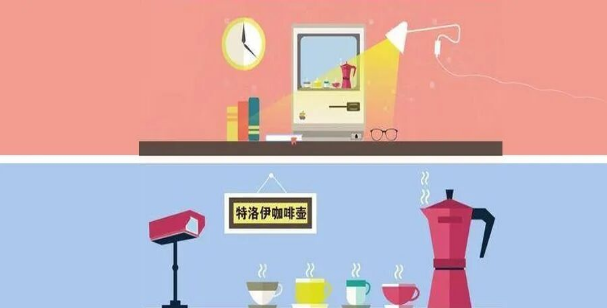
In 1995, Bill Gates first mentioned the concept of “connecting everything” in his book “The Road Ahead”. However, due to the limitations of wireless networks and sensing devices at that time, this concept could not be realized. But with technological advancements, many of Gates’ visionary predictions have become a reality.
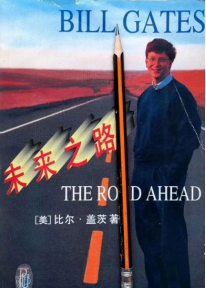
In “The Road Ahead”, it is written: “You can put all information and more software into a single information device, which we call a pocket personal computer. It is the size of a wallet, and you can put it in your pocket or handbag. It can not only display information and schedules but also allow you to read/send emails, record weather and stock comments, and play simple or complex games.”
This is exactly what we cannot live without: smartphones! Our phones are always in hand, and when they are not, we feel incomplete. Although the pocket personal computer described by Bill Gates is not exactly the same as smartphones, it is essentially the prototype of smartphones.
It is also written in “The Road Ahead”: “If you want to appreciate the artworks in a museum or gallery, you can ‘walk’ into a visual display and freely switch within the works, as if you were there in person. You can use super links to learn detailed information about a painting or a statue…”
Today, the development of Virtual Reality (VR) has gradually made this prediction a reality. With the advancement of VR/AR, artificial intelligence, 5G/cloud/edge computing, blockchain, and other technologies, human exploration in three-dimensional space is becoming increasingly mature. The perfect combination of various cutting-edge technologies can even reach a level where it is difficult to distinguish between reality and illusion.
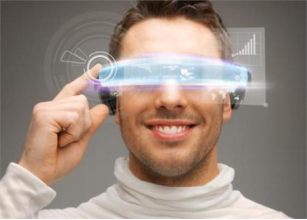
In fact, the term “Internet of Things” first officially appeared in 1999, proposed by Kevin Ashton, who is known as the “father of the Internet of Things”. At that time, Ashton was giving an internal lecture at Procter & Gamble titled “The Internet of Things”. Ashton’s definition of the Internet of Things was simple: connecting all items to the internet through information sensing devices such as RFID for intelligent identification and management.
In 1995, Ashton was still a brand manager at Procter & Gamble. During a store visit, he discovered that a popular brown lipstick was always out of stock. Initially, he thought it was sold out, but upon communicating with P&G supply chain staff, he learned that there were still plenty in the warehouse; it was just that the information between the warehouse and the sales point was delayed, resulting in untimely restocking. While others might see this as coincidence, Ashton was not convinced: he wanted to find out where that lipstick had gone. What had happened to that lipstick?

At that time, retailers commonly used barcode scanning systems for inventory management, but barcodes could not convey product location information, making it impossible to know the real-time sales status on the shelves, thus failing to replenish sold-out items promptly. “Clearly, barcodes are not perfect,” Ashton stated. He believed a method could be found to track the dynamic changes of products.
One day, while driving home, Ashton had a flash of inspiration: what if the wireless communication chip in membership cards were embedded in the lipstick? He placed a small radio chip inside a lipstick and installed an antenna on the shelf, which allowed the lipstick packaging data to alert store managers about which products were no longer on the shelf. This technology gave Ashton a “second pair of eyes” on the shelves.
Ashton generically named it a “storage system”. In the 1990s, the internet was just becoming available to the public. By connecting to the internet and storing data online, the chip could save costs and memory. To help company executives grasp this system that connected items like lipsticks to the internet, Ashton gave this system, which allowed items to communicate information without human intervention, a short and grammatically incorrect name—”Internet of Things”.

The concept of the Internet of Things was officially proposed on November 17, 2005. On that day, at the World Summit on the Information Society (WSIS) held in Tunisia, the International Telecommunication Union (ITU) released the “ITU Internet Report 2005: Internet of Things”, formally proposing the concept of the Internet of Things. The report pointed out that the era of ubiquitous “Internet of Things” communication is approaching, where all objects in the world can autonomously exchange data via the internet.
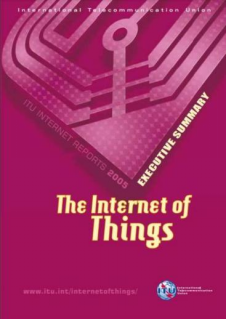
Since entering the 21st century, with the popularization of sensing devices, embedded systems, and the internet, the Internet of Things has been regarded as the third wave of information revolution after computers and the internet. The Internet of Things has gained significant attention worldwide, with major industrialized countries proposing various development strategies for the Internet of Things.
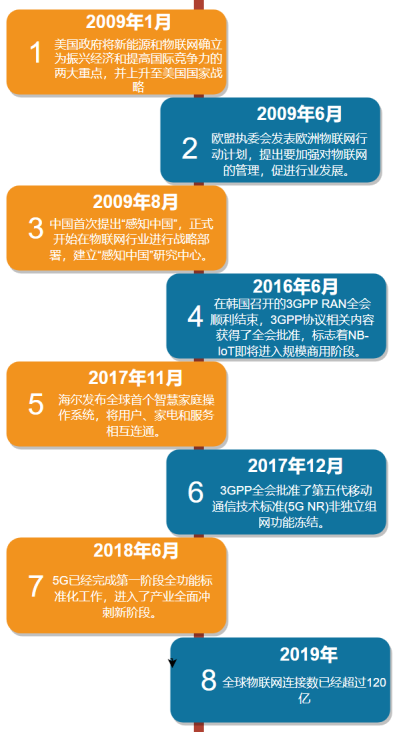
The scale of China’s Internet of Things market is currently in a steady growth phase, with an average annual compound growth rate of 23.4% during the 13th Five-Year Plan period. In 2020, the pandemic accelerated the pace of digital transformation, with a significant increase in growth rate. In 2022, against the backdrop of unstable international conditions and ongoing domestic pandemic, the national Internet of Things market scale saw a decline in year-on-year growth rate.

Technical Features of IoT
So, what are the technical features of the Internet of Things? As is well known, the Internet of Things can be divided into four layers: the perception layer, transmission layer, platform layer, and application layer.
The perception layer is the lowest layer of the Internet of Things, primarily responsible for collecting data through terminals such as chips, sensors, actuators, and modules from the physical world.
The transmission layer serves as the pipeline for the Internet of Things, mainly responsible for transmitting data and further relaying the information collected and identified by the perception layer to the platform layer. The transmission layer mainly utilizes wireless transmission methods, which can be divided into long-distance and short-distance transmission.
The platform layer is responsible for processing data and plays a crucial role in the Internet of Things system by summarizing, processing, and analyzing data from the perception layer. This includes PaaS platforms, AI platforms, and other capability platforms.
The application layer is the highest layer of the Internet of Things, primarily addressing specific industry problems in vertical fields based on the data from the platform layer, including security, logistics, transportation, and home automation.
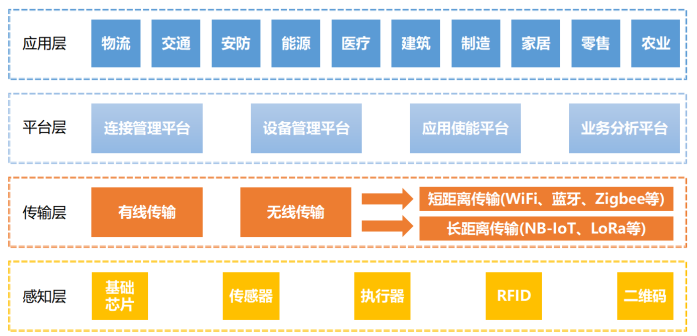
In summary, the technical features of the Internet of Things mainly include the following three aspects:
① Comprehensive perception: Utilizing RFID, sensors, QR codes, etc., to obtain object information anytime and anywhere. “Perception” is the core of the Internet of Things, referring to the process of directly acquiring and understanding the information of objective things. The demand for information acquisition drives the continuous development of new technologies to obtain perceptual information, such as sensors, RFID, and positioning technologies.
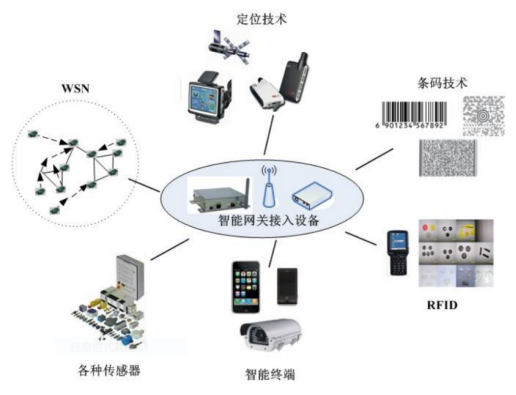
② Reliable transmission: By integrating various telecommunications networks and the internet, the information of objects can be transmitted in real-time and accurately. The stability and reliability of data transmission are key to ensuring inter-object connectivity. To achieve information exchange between objects, a unified communication protocol must be established. Additionally, since the Internet of Things is a heterogeneous network, there may be differences in protocol specifications between different entities, requiring corresponding software and hardware for conversion to ensure real-time and accurate information transmission between objects.
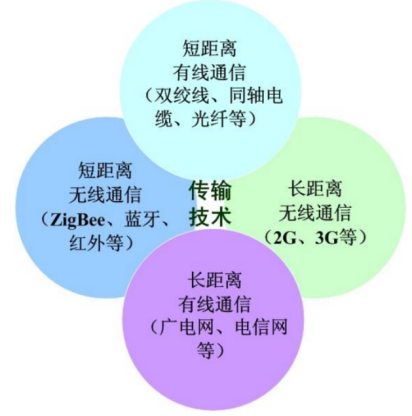
③ Intelligent processing: Utilizing cloud computing, fuzzy recognition, and various intelligent computing technologies to analyze and process massive amounts of data and information, implementing intelligent control over objects. The goal of the Internet of Things is to achieve intelligent identification, positioning, tracking, monitoring, and management functions for various objects (including people). This requires the use of intelligent computing technologies such as cloud computing and artificial intelligence to store, analyze, and process massive data according to different application requirements for intelligent control of objects.
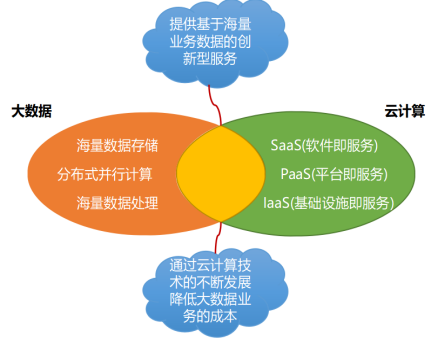
Application Scenarios of IoT
Currently, the connection scenarios of the Internet of Things are mainly divided into six major application scenarios: ① Home scenarios, such as smart speakers, smart locks, smart cameras, gateways, and other smart hardware. ② Industrial scenarios, such as smart water meters, smart electricity meters, industrial equipment monitoring devices, and other smart hardware. ③ Personal scenarios, such as smart wristbands, smart watches, electronic student cards, and other smart wearable devices. ④ Vehicle networking scenarios, such as driving assistants. ⑤ Clustering market scenarios, mainly referring to the construction of smart parks and smart communities, including smoke detectors, access control, cameras, and other smart hardware. ⑥ Medium and low-speed scenarios, such as smart bicycles and smart charging piles in daily life.

Next, I will introduce the application of the Internet of Things in logistics, agriculture, fire protection, and other fields.
① Smart Logistics
The logistics industry, as a pillar industry of the national economy, currently faces two main constraints on its development: high end logistics distribution costs and incomplete infrastructure construction. To reduce logistics costs in China, it is necessary to minimize ineffective handling in the middle, which requires relying on the internet and information technology for solutions. Smart logistics refers to integrating the Internet of Things with traditional logistics, achieving automation, visualization, controllability, intelligence, and networking through refined, dynamic, and scientific management.
The architecture of smart logistics systems is based on the application of Internet of Things technology in the logistics industry. Thus, the architecture of smart logistics systems will be introduced from the two aspects of Internet of Things technology attributes and inherent attributes of the logistics industry.
From the perspective of the Internet of Things attributes of the smart logistics system, the technical architecture of the smart logistics system is mainly divided into three layers: perception layer, network layer, and application layer. The perception layer is the foundation for the smart logistics system to perceive goods and is the starting point of smart logistics. The network layer serves as the neural network and virtual space of smart logistics. The application layer is the application system of smart logistics, which executes operations in real-time based on decision instructions perceived from the network layer using Internet of Things perception technology.
From the perspective of the inherent attributes of the logistics industry in the smart logistics system, it mainly consists of warehouse technology, trunk technology, last-mile technology, and end technology. Warehouse technology is mainly applied in the application layer of the logistics system to achieve automatic classification, sorting, and machine handling of logistics; trunk technology mainly refers to driverless truck technology; last-mile technology is a crucial aspect of end distribution; and end technology mainly refers to smart express cabinets. The data foundation of the smart logistics system mainly includes three areas: the Internet of Things, big data, and artificial intelligence. The technical architecture of smart logistics is shown in the figure below.
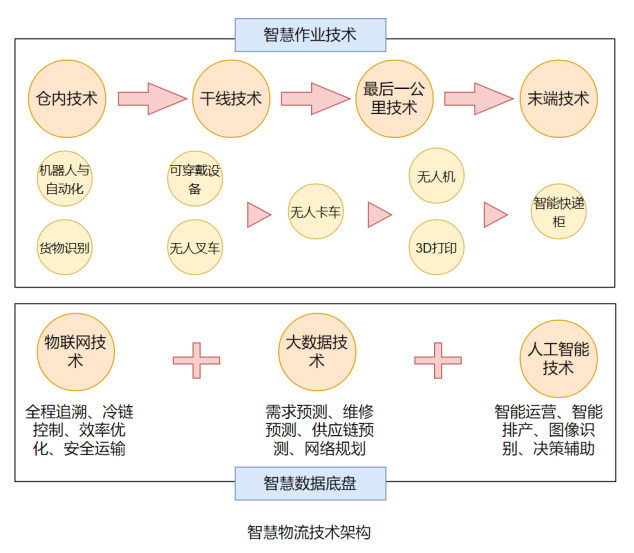
The smart logistics market is rapidly developing, with the scale expected to exceed one trillion yuan by 2025. The industry is moving towards automation, unmanned operations, data-driven approaches, and intelligence. In the future, logistics robots will emerge in large numbers. Currently, major courier companies such as Alibaba, JD, and SF are investing in the research and application of intelligent logistics hardware. As labor costs continue to rise, the cost of robots will increasingly approach that of manual labor, making it only a matter of time before simple repetitive tasks are replaced by robots.
② Smart Agriculture
Smart agriculture refers to the integration of modern information technology such as the Internet of Things and artificial intelligence with traditional agriculture to achieve an information-based and precise agricultural production process. Smart agriculture represents the advanced stage of agricultural information development, transitioning from digitalization to networking and then to intelligence, and is the core content of China’s Agriculture 4.0. Currently, smart agriculture in China is mainly focused on agricultural planting and animal husbandry, with enormous development potential.
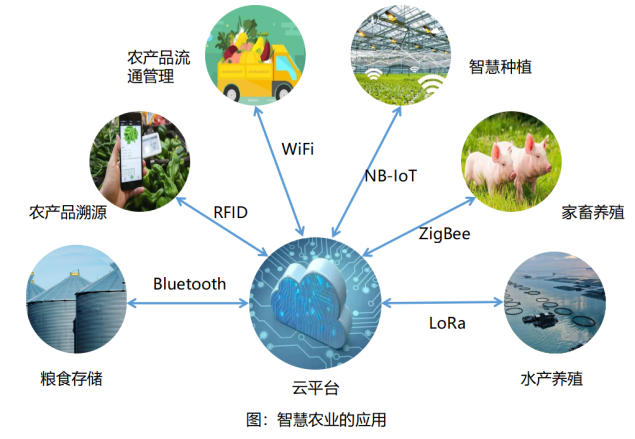
The architecture of smart agriculture technology can be divided into four layers based on the Internet of Things hierarchy: perception layer, network layer, platform layer, and application layer.
The perception layer refers to the sensing stage in smart agriculture, utilizing information sensing technology to perceive the agricultural production environment, the life and quality safety of plants and animals, and traceability. In crop cultivation, the main parameters collected include light, temperature, moisture, fertility, and gas; in animal husbandry, the focus is on harmful gas concentrations such as carbon dioxide, ammonia, and sulfur dioxide, as well as environmental parameters like air dust, droplets, and temperature and humidity; in aquaculture, data such as dissolved oxygen, pH, ammonia nitrogen, conductivity, and turbidity are primarily collected.
The network layer uses information transmission technology to transmit data from sensors to the cloud platform via wireless communication technologies such as ZigBee, WiFi, LoRa, and NB-IoT.
The platform layer utilizes big data, cloud computing, and artificial intelligence technologies to analyze and process the data transmitted from the network layer and generate decision instructions, allowing for automated operations at the application layer.
The application layer includes typical applications such as smart planting, smart livestock farming, smart aquaculture, agricultural product traceability, and smart grain storage, as shown in the figure below.

③ Smart Fire Protection
Smart fire protection solutions integrate advanced technologies such as the Internet of Things, intelligent early warning, intelligent processing, and big data. By adding data collection devices at the hardware level, a sensing network is constructed to upload data to the smart fire management platform, covering the entire process from disaster perception to intelligent warning to intelligent processing, achieving visualized “one map” smart supervision and control. Through the “fire management platform”, comprehensive command, scheduling, analysis, and decision-making can be achieved, winning more time for rescue operations and minimizing disaster losses.
The core of smart fire protection consists of five layers: application, platform, transmission, aggregation, and perception. The application and platform layers form the head applications of smart fire protection, while the transmission layer consists of wireless transmission devices for smart fire protection. The aggregation and perception layers are based on the traditional fire protection capabilities.
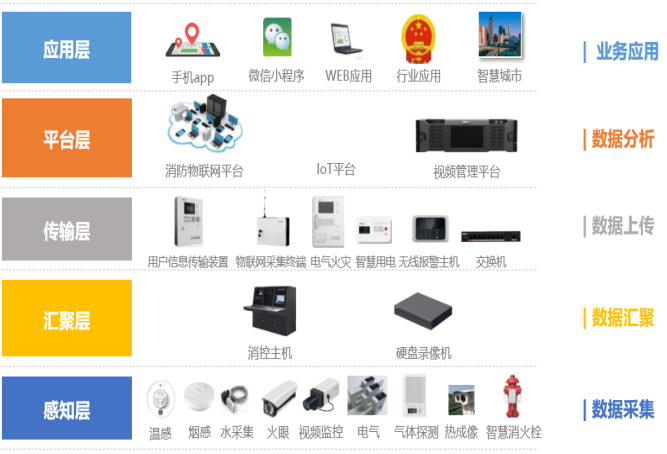
IoT + New Technology Applications
The rise of the Internet of Things is a result of the rapid development of information technology and a product of the internet reaching a certain stage. The core point of the Internet of Things is to connect objects to the network, forming a large, intelligent network where all items can be remotely sensed and controlled. The next step in the development of the Internet of Things is to continue strengthening its integration with blockchain, artificial intelligence, wearable devices, AR/VR, robotics, drones, and 3D printing, leading to IoT +. Below are a few popular IoT + applications.
① IoT + Blockchain
With the development of the Internet of Things, we have entered the era of big data. It can be said that data is to the Internet of Things what traffic is to the internet; trading and sharing data is an inevitable trend in market development. Only through multidimensional integration of data can we maximize its value. However, currently, data exists in silos, and most companies are reluctant to trade their data through trading centers due to concerns about profit and potential disputes over profit distribution. This creates an urgent need for a secure, highly credible, and open data management method.
This is where blockchain provides a new perspective.Blockchain is a distributed encrypted digital classification technology, very suitable for recording the detailed information of massive transactions occurring between IoT devices.Thanks to the transactional sharing and immutability of blockchain, decentralized value transfer will bring transformative improvements to IoT services.In the face of the explosive growth of IoT device scale in the future, applying blockchain technology is expected to improve the following pain points of IoT platforms:
● Reducing pre-transaction verification costs: By utilizing the immutable advantages recorded in the blockchain system, users and devices on the platform do not need to verify each other’s information; they only need to determine whether the conditions given by the other party differ from previous ones during the transaction.
● Reducing operational management costs: By utilizing the peer-to-peer network technology of blockchain, each node acts as an equal node, thus the entire IoT solution does not need to introduce large data centers for data synchronization and management control, thereby reducing the costs of data communication and processing.
● Protecting data security and privacy: Blockchain records provide security, with copies of records distributed across numerous physical and logical locations, with no single party having centralized control over it.
● Convenient and reliable fee settlement and payment: By using blockchain technology, IoT devices owned by different owners can directly transmit data through encrypted protocols, and data transmission can be billed according to transactions. This requires designing a type of encrypted “digital currency” within the IoT blockchain as the basic unit for transaction settlement. As long as IoT device providers incorporate blockchain support before leaving the factory, they can conduct direct monetary settlements across various operators across the entire network.

② IoT + Artificial Intelligence
With the rapid development of underlying technologies in artificial intelligence, intelligent machines have now made the leap from “understanding the physical world” to “personalized scene implementation”. The integration of artificial intelligence and the Internet of Things will gradually penetrate various industries and lead to revolutionary changes. AI can replace humans in various technical tasks and some cognitive labor in technology and complex engineering, resulting in dramatic changes to the existing social structure.
Artificial intelligence is responsible for recognition, perception, and processing, while the Internet of Things is responsible for connecting objects. Currently, the IoT industry has initially formed three levels: cloud, management, and terminal, where the terminal refers to various smart hardware such as smartphones, smart speakers, and smart cars; the management refers to connection management platforms, while the cloud includes infrastructure services, platform services, software services, and third-party services. With the deep integration with artificial intelligence, the future Internet of Things will exhibit the following functions:
● Edge intelligence: Terminals can make intelligent decisions even when disconnected from the network; when real-time data processing is required, they can quickly generate actions to respond to emergencies.
● Interconnected drive: When smart products are in a “networked” state, they can achieve intelligent collaboration without human intervention.
● Cloud upgrades: When smart products are in a “connected” state, cloud-based artificial intelligence can better mine and leverage the value of edge hardware, maximizing the efficacy of smart products. With the assistance of edge intelligence, cloud intelligence can further integrate data, creating maximum value through collaboration between systems.
Imagine a scenario without artificial intelligence: the Internet of Things would consist of billions of smart terminals continuously collecting massive amounts of data and transmitting it to the backend through the network. If the backend processing speed and accuracy cannot keep up with the data collection speed of the terminals, the consequences could be disastrous, affecting everything from household appliances failing to communicate with each other to life-threatening situations—such as pacemakers malfunctioning or hundreds of cars colliding.
③ IoT + AR
Integrating AR technology into the Internet of Things can make information presentation and interaction more convenient and intuitive, creating a more user-friendly interface. This allows us to intuitively and conveniently view the operational status, performance, and various important parameters of object entities anytime and anywhere. The sensed data can be fed back to the backend through the Internet of Things, and through data mining, products can be continuously optimized and improved, providing customers with a better experience. Currently, the following applications have emerged:
● Aircraft manufacturing and maintenance: It is well known that aircraft contain vast and complex electronic circuits and components. Without AR technology, engineers must refer to function manuals for each individual process, which consumes a lot of their energy and time, reducing efficiency and severely delaying project timelines. Reports indicate that since Boeing began using Google Glass, efficiency has increased by 25%, and error rates have dropped by 50%.
● Remote operation capabilities: For environments that are dangerous, uninhabitable, or unsuitable for human operation, safe remote operation can be achieved. For example, in nuclear power plants or underwater, IoT can collect site data parameters and transmit them to a central control center, which combines on-site images and data for AR 3D presentation, allowing robots and engineers to complete remote interactions, monitoring, and control operations.
● Monitoring and diagnosing machinery: AR devices can assist engineers in seeing various parameters of equipment within machinery workshops. For instance, CNOOC’s AR inspection solution allows operators to standardize their inspection work based on the instructions provided by AR glasses. At the same time, AR glasses visualize data, allowing operators to understand equipment operation conditions immediately by interconnecting with other networked devices, thus improving inspection efficiency.
● Maintenance of smart city infrastructure: Most of the infrastructure in cities is located outdoors and is difficult to access. AR can facilitate police oversight of urban infrastructure, and provide convenience for government departments monitoring municipal facilities such as water, electricity, and heating, allowing them to easily locate fault points through real-time data visualization and record the status of infrastructure.
Today’s era is characterized by continuous enhancement of network communication technology, with a clear growth trend in global IoT applications. 5G has injected new vitality into the Internet of Things, shifting connection scenarios from bit connections to data connections. The new infrastructure of the Internet of Things is becoming the foundational base for digital cities and digital industries. We are entering the “Era of Perceptive Connectivity”, where IoT devices bring immense convenience to our lives, endowing everything with “intelligence” and teaching machines to understand humanistic care, transforming a cold material world into a living entity full of warmth and tone. The smart homes, intelligent healthcare, virtual reality, and self-driving cars that were once only seen in science fiction films are gradually entering our lives through interactive experiences. The future has arrived, and we await its unfolding.
Finally, I quote Zhou Hongyi, the author of “Smartism”: “In the intelligent era, everything we can see and imagine, whether it be cars, homes, or wearable devices, will achieve intelligence and real-time connectivity to the network.”
If you like this article, feel free to follow Xiao Hui’s WeChat public account: